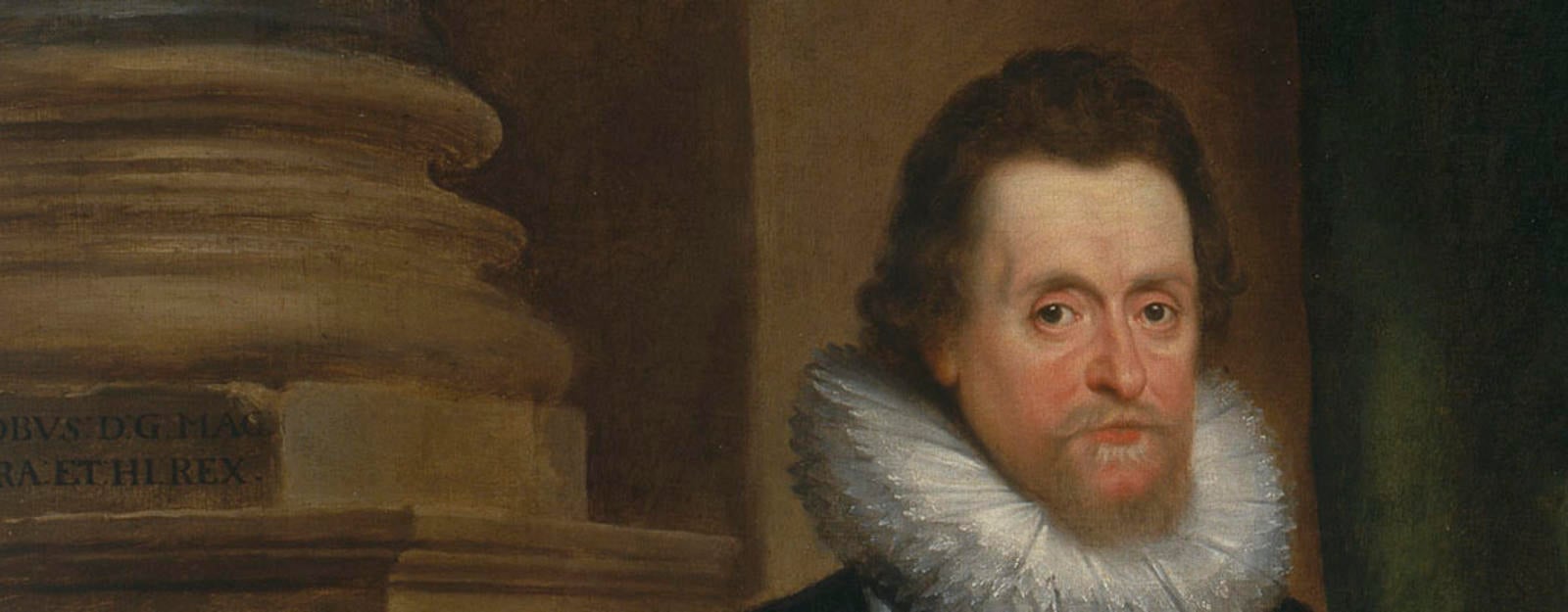James I, King of Great Britain (1566-1625)

- Born 1566, Edinburgh Castle [Edinburgh]
- Died 1625, Theobalds Palace [Hertfordshire]
James I was the only child of Mary, Queen of Scots and Lord Darnley, both of whom were great-grandchildren of Henry VII. On the death of Elizabeth I in 1603, he moved south and became the first monarch of the Stuart dynasty in England.
By the time James VI of Scotland came to take up the English throne, he was married to Anne of Denmark, and had three children, Henry, Prince of Wales, Charles I and the 'Winter Queen', Elizabeth of Bohemia. His income increased dramatically from what he had been used to in Scotland, but so did his spending. Some of this spending was on the staging of his accession to the throne, and some was on jewels and works of art. The visual splendour of the monarch and his court was one way to reinforce his claim to the throne.
James also wrote Basilikon Doron (Royal Gift) a book explaining the role of the king as a shining example, and upholding the idea that God had chosen him to be monarch - the doctrine of the Divine Right of Kings. Books and scholarship lay at the heart of the reign of this 'peaceful King'. James was well read, had an extensive library, and commissioned a new translation of the Bible - the Authorised Version (‘King James Bible’), published in 1611.
In addition to the pageants and celebrations surrounding his kingship, James I also commissioned portraits. This was another way to make the Stuart dynasty more visible and more recognisable in England, although James himself was a reluctant sitter. In Paul van Somer's portrait James is depicted in full regalia and behind him, through the window can be seen the proposed new building of the Banqueting House. James had employed Inigo Jones, the architect, to add to various royal palaces, and during his reign the Queen's House was added at Greenwich, the Banqueting House at Whitehall Palace, and the Queen's Chapel at St James's Palace.
James also founded a tapestry factory at Mortlake, which would become one of the greatest seventeenth-century European producers of expensive and richly woven works, particularly under the patronage of his second son, the future Charles I. In 1613, James was presented with a suit of Japanese armour - a splendid and very early example of this sophisticated art in the British Royal Collection.
Reigned: 1567–1625 (in Scotland)
1603–25 (in England)